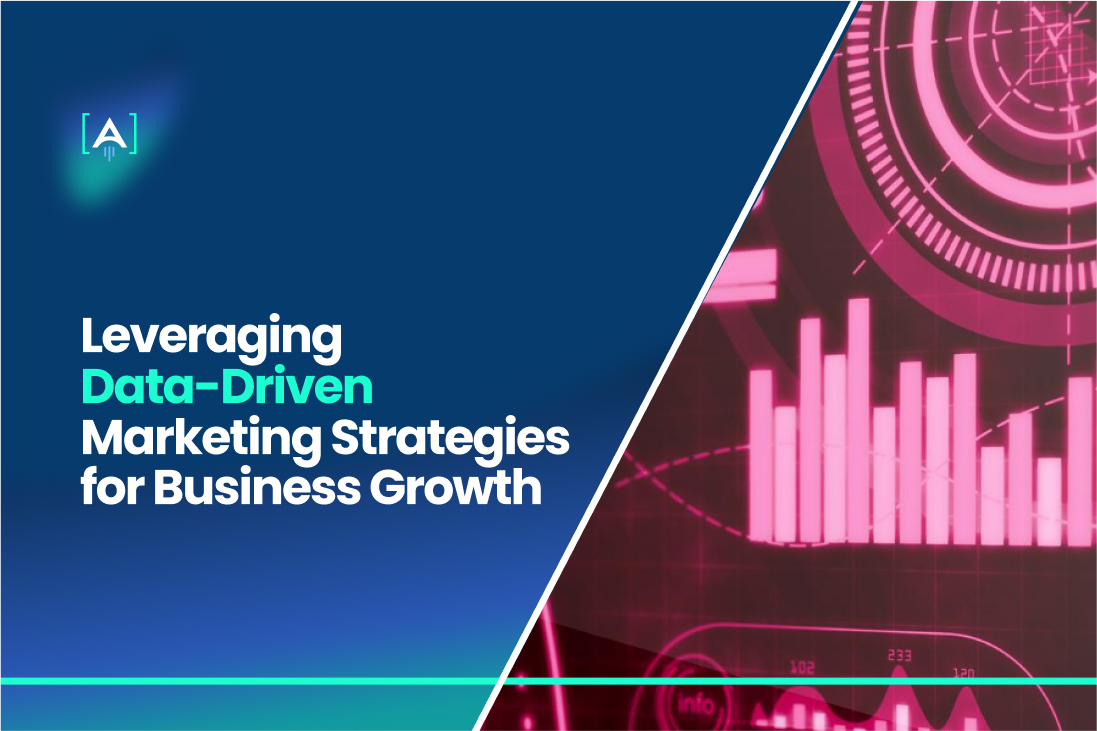Download Your Free Guide
If you don’t use data, you fall behind. It’s a simple truth for all types of businesses in today’s market.
Companies that use data effectively are likelier to outperform competitors in acquiring customers, staying profitable, and keeping customers.
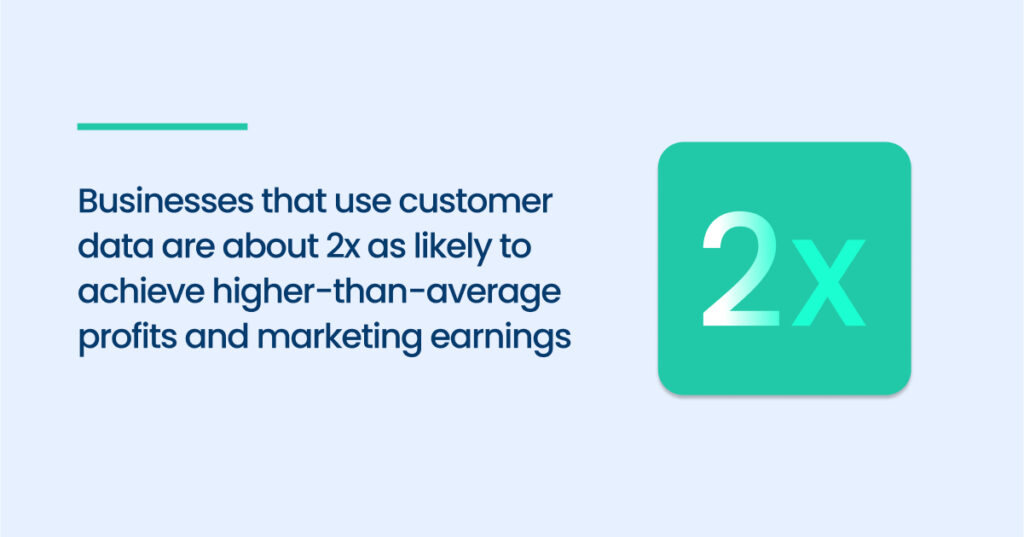
(source)
This guide will show you the benefits of data-driven marketing.
You’ll learn about core principles of data-driven marketing strategy, key metrics, and advanced tools.
Let’s explore how focusing on customer data can improve your marketing.
Benefits of Data-Driven Marketing
Using data helps your business:
- Target the Right People: By analyzing past customers’ demographic data, you can create ads that really speak to them, bringing in more sales.
- Optimize SEO Strategy: Checking what people search for can help you show up more often in Google, bringing more visitors to your website.
- Make Customers Feel Special: Knowing what your customers like lets you give them personalized experiences, making them happier and more likely to become loyal. The success rate of personalized marketing strategies is 95%.
- Close the Sale: Knowing the sales data, identify and email customers about abandoned cart items, prompting them to complete their purchase and recover potentially lost sales.
Given these advantages, partnering with a growth marketing agency that specializes in data-driven strategies, such as the Azarian Growth Agency, can be a smart investment.
The Foundation of Data-Driven Growth Marketing

Data-driven marketing shifts how businesses connect with their audience, regardless of size or industry. At its core, it’s about deeply understanding your customer journey and optimizing every stage of the conversion funnel.
You can craft targeted and effective marketing strategies by analyzing their behaviors and preferences.
The era of guesswork and broad, unfocused marketing campaigns is over. Today, we harness the power of customer data to ensure precision in our marketing efforts.
Modern data-driven marketing tools and technologies collect and analyze vast information, revealing patterns and insights.
These insights enable you to develop strategies directly addressing your audience’s needs and desires.
By adopting data-driven marketing strategy, you can connect with your target audience more accurately and respond swiftly to feedback, ultimately reducing customer churn by improving engagement and satisfaction.
Moreover, leveraging data allows businesses to be agile, adjusting their strategies in real-time to stay ahead of market trends and customer expectations.
How Amazon Leverages Consumer Data
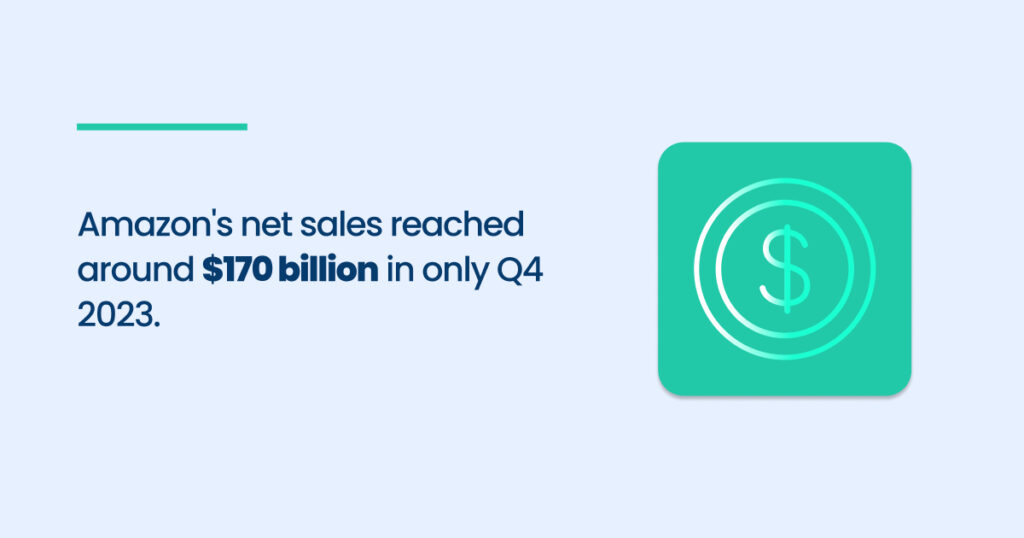
(source)
Amazon has become an expert at anticipating user needs through a constant data flow.
Amazon uses Big Data technology to optimize users’ experience, their supply chain and more.
Every user interaction feeds into a massive analysis engine, from searches and clicks to purchases and wishlists.
This data, meticulously analyzed through their advanced algorithms, follows principles akin to the hook model.
By meticulously analyzing this, Amazon recommends products with precision, potentially sparking interest in things users weren’t even aware they needed.
Amazon tailors ad placements based on user profiles, ensuring users see promotions for relevant products.
Warehouses are stocked with the right inventory in the right locations, predicted by sophisticated algorithms that analyze past sales data and current trends. This translates to faster delivery times and minimizes wasted space.
Moreover, Amazon leverages this data to employ dynamic pricing, changing prices based on demand and competitor offerings. This ensures users might find great deals while Amazon stays competitive.
How JPMorgan Chase Leverages Data
JPMorgan Chase, a financial giant, uses a new AI-powered virtual assistant that helps corporate clients make financial transactions easily and provides consistent customer service through various channels.
AI in marketing has gained a wide popularity.
The AI technology sources data from client interactions and uses it to offer personalized assistance and tailored recommendations over time.
Key Marketing Metrics for Success
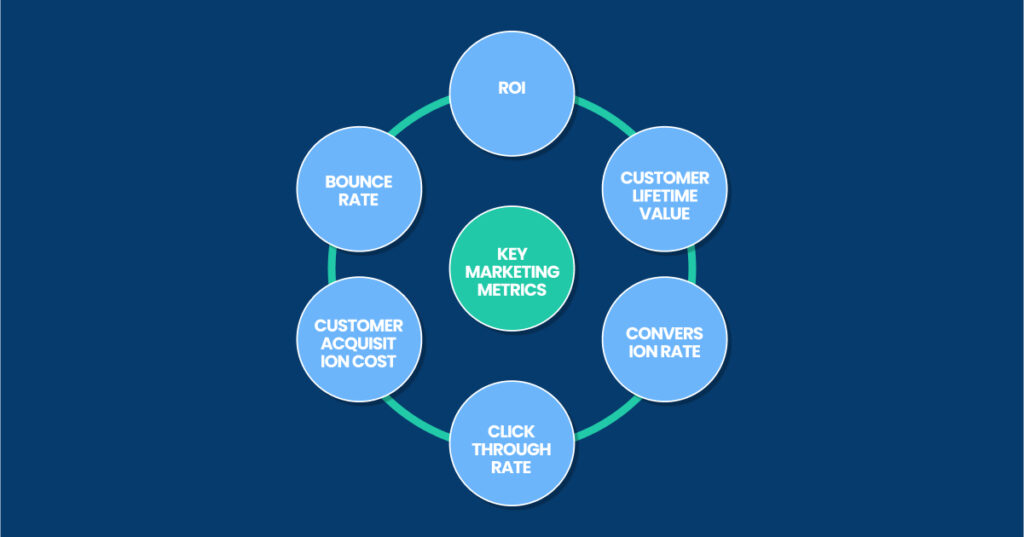
Knowing which buttons to press for growth is your superpower as a business owner. Key marketing metrics are those buttons.
They are the pulse of your business, telling you where you exceed and where you need a boost.
Let’s dive into the metrics that matter for different companies to understand what to pick for your unique business.
Examples of Key Metrics in Different Companies
Shopify
- Conversion Rate: Shopify merchants track the percentage of visitors who complete a purchase. They often achieve a high conversion rate through optimized product pages, user-friendly checkout processes, and personalized marketing campaigns. For instance, Shopify Plus merchants frequently see higher conversion rates due to advanced customization options and targeted marketing efforts.

(source)
- Customer Acquisition Cost (CAC): Shopify helps its users manage and lower CAC through integrated marketing tools like social media ads, SEO, and email marketing. With its comprehensive analytics, Shopify helps merchants pinpoint the most cost-effective channels for gaining new customers.
- Lifetime Value (LTV): Shopify merchants can improve LTV by using automated email campaigns, loyalty programs, and personalized shopping experiences. For example, a fashion retailer on Shopify might use customer purchase history to recommend new arrivals, boosting repeat purchases and increasing LTV.
Salesforce
- Customer Acquisition Cost (CAC): Salesforce tracks the cost of acquiring new business clients through its extensive sales team and marketing campaigns. By offering free trials and demonstrations, Salesforce effectively manages and often lowers its CAC.
- Lifetime Value (LTV): Salesforce calculates LTV by considering subscription renewals, upsells, and cross-sells of its services like Sales Cloud and Service Cloud. Long-term contracts and high customer retention rates contribute to a substantial LTV.
- Engagement Rate: Salesforce monitors its users’ engagement with their platform through usage analytics and customer feedback. High engagement indicates effective onboarding and ongoing value delivery, which leads to better client retention and upselling opportunities.
Zoom
- Engagement Rate: Zoom tracks engagement by monitoring metrics such as the number of meetings hosted, average meeting duration, and user interaction features like screen sharing and recording.
- Conversion Rate: Zoom’s conversion rate from free users to paid subscribers is a critical metric. The freemium model encourages widespread usage, and the conversion rate increases as users require more features like extended meeting durations and larger participant capacity.
- Return on Investment (ROI): Zoom compares the revenue generated from paid subscriptions to marketing and infrastructure costs. The company’s high ROI is reflected in its rapid growth and profitability, especially during peak demand periods.
How to Choose the Key Metrics
Choosing the right metrics for your business requires a few targeted steps:
- Set Clear Goals: What does success look like for you? More sales, deeper engagement, or something else? Your business goals will guide your metric choices.
- Match Metrics to Your Business Model: Each business model has vital signs. For example, a subscription service should focus on LTV and churn rate, while an e-commerce site might prioritize CAC and conversion rates.
- Segment for Insights: Break down your data by product, channel, or customer group. This helps you spot both your star performers and areas that need work.
- Check Regularly: Make it a habit to review your metrics consistently. This keeps you agile, ready to jump on opportunities or shift from what’s not working.
- Iterate and Optimize: Use your metrics as a feedback loop. Adjust your strategies based on what the numbers are telling you, always aiming for better performance.
Harnessing Customer Data for Tailored Strategies
Why do you need to embrace customer data?
Most importantly, to personalize your messages to make each customer feel special.
Let’s dive into why customer data is so important and check out some examples of personalization.
Why Personalization is so Important
- Customer Insights: Data reveals what your customers like, need, and do. So, you can make marketing feel personal and relevant.
- Boost Engagement: Personalized messages catch attention. They show customers you get them, which makes them more likely to engage with your brand.
- Increase Loyalty: When customers feel understood, they stick around. Personalization builds a connection that can turn buyers into loyal fans.
- Drive Sales: Tailored recommendations and messages can lead to more purchases. Customers are more likely to buy when offers resonate with their interests.
- Stay Competitive: Personalization can set your brand apart in a crowded market. It’s a way to stand out and show customers why they should choose you.
- Feedback Loop: Personalized interactions provide valuable feedback. You learn more about customer preferences, which lets you refine your approach even further.
Download Your Free Guide
Examples of Successful Personalized Approaches
Effective marketing campaigns leverage customer data to create personalized experiences that resonate with individual preferences and behaviors.
Here are some examples of successful personalized campaigns:
O2
O2 faced a challenge with their “tariff refresh” TV ad, aiming to engage mobile users.
What did they do? They tailored ads to mobile users based on their data, offering personalized messages about phone value, upgrades, and nearby stores.
With over 1,000 versions of the ad, personalized ads had a 128% higher click-through rate.
These ads achieved big results with small tweaks: a 49% lower cost per order overall and a 61% reduction in the early upgrade segment.
Easy Jet
EasyJet has been making travel easy and affordable for over 20 years.
To celebrate their 20th birthday, they wanted to do something different.
They used the data of their customers’ journeys. Using this data, they created emotional stories in entirely personalized emails.
These emails had dynamic copy, images, and links tailored to each customer’s journey.
The results were outstanding: over 100% higher open rates and 25% higher click-through rates than average.
Netflix
Netflix has become a master of wielding user data to personalize the streaming experience.
They extract information, analyzing what users watch, how long they watch, what parts they rewatch, and the time of day they typically stream.
By understanding these viewing habits more deeply, Netflix can create a personalized recommendation list for each user.
Netflix users have become more and more engaged thanks to this data-driven marketing strategy.
Channel Optimization: Making Data-Driven Decisions
Effective strategies aren’t enough if you’re not using the right marketing channels to reach your audience.
You can also incorporate retargeting into your channel optimization strategy to ensure that your marketing efforts continue to engage potential customers who have shown interest but haven’t yet converted.
Here’s how strategic channel optimization can directly benefit your business.
- Maximize ROI: You spend smarter, not harder, by focusing on channels that perform. Data shows you where each dollar goes the furthest.
- Reach Your Ideal Customers: Data points to where your target audience actually hangs out. This means the right eyes see your messages.
- Streamline Marketing: No more guessing games. Use data to choose channels, saving time and resources confidently.
- Adapt and Grow: Real-time data lets you shift quickly, keeping your data-driven marketing strategy fresh and responsive to market changes.
Case Studies of Effective Channel Optimization
Airbnb Referral Program
Airbnb‘s growth team revolutionized referral systems, increasing bookings and sales.
They prioritized mobile development, recognizing its significance in email engagement.
They collaborated closely with mobile development teams.
Upon completion, Airbnb launched on the web, iOS, and Android.
Simplifying the invite process was key, allowing users to import contacts and customize invitations easily.
They focused on presenting contacts with whom users frequently interacted, improving conversion rates.
They fostered a natural conversation by framing the referral as a gift for both parties, increasing user participation.
Peloton on TikTok
Known for high-end exercise bikes and fitness classes, Peloton faced the challenge of reaching a younger audience beyond its affluent demographic.
Recognizing TikTok’s popularity with Gen Z, they launched the #PelotonChallenge campaign, encouraging users to share creative workout videos set to popular music.
The campaign went viral, attracting millions of views and sparking a new wave of interest in the brand, particularly among younger generations.
The campaign also drove transactions, with 7.5% of customers making a booking within 30 days.
Predictive Analytics: Forecasting Marketing Trends
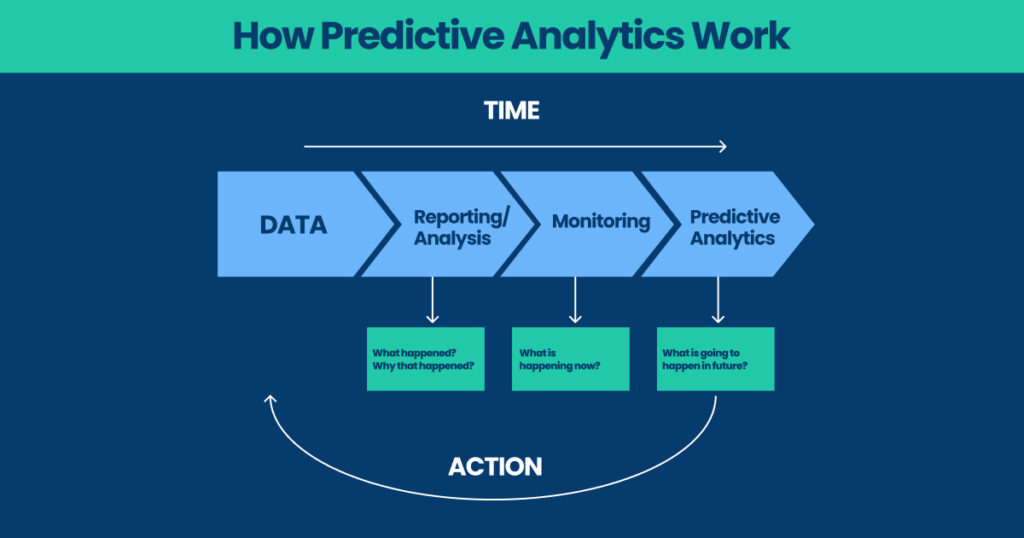
Predictive analytics guides you through the future of consumer behavior and market shifts.
Here’s how businesses can use predictive analytics to stay a step ahead.
The Power of Predictive Analytics
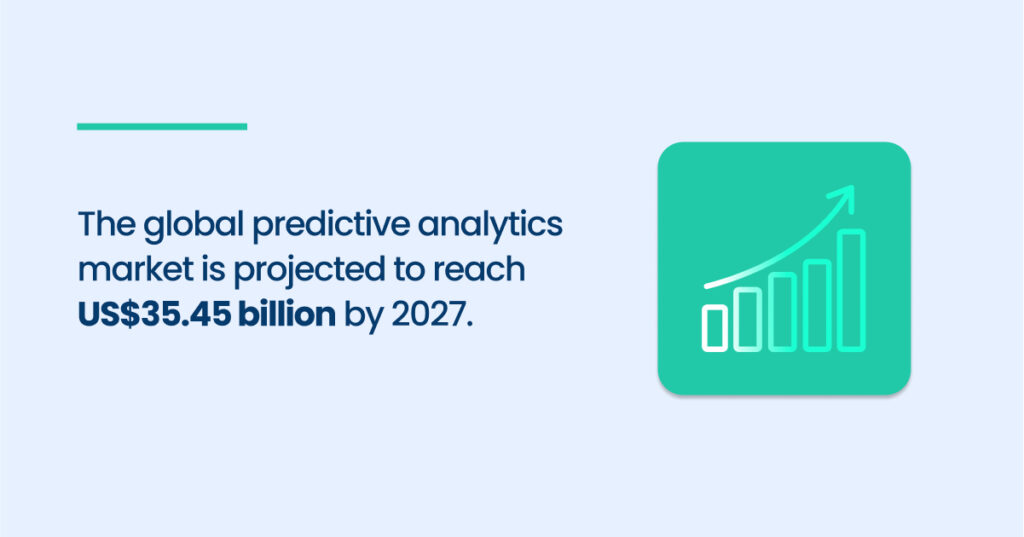
(source)
This powerful tool transforms data into future insights, making your business competitive.
- Know What Your Customers Want Next: Imagine knowing what your customers will want before they do. Predictive analytics helps you see future trends based on past actions.
If you understand your customers’ needs before they even articulate them, you can tailor your products or services to meet those upcoming demands, thus increasing sales, signups, downloads, etc. For example, Spotify uses predictive analytics to suggest personalized playlists.
- Spot Trends Early: This tool can show you what’s likely to become popular. By identifying what’s expected to catch on, you position your business as a trendsetter, not just a follower.
This early insight allows you to adapt your data-driven marketing strategy ahead of others, capturing market share and establishing your brand as innovative and forward-thinking.
- Set the Best Prices: Knowing how demand will change lets you adjust prices strategically to maximize your profits and competitiveness.
Whether it’s offering early bird discounts or premium pricing for in-demand items, predictive analytics ensures you hit the market sweet spot every time.
- Lower Risk: Predicting what’s coming helps you avoid mistakes, like investing in a product no one will want.
By predicting less favorable market conditions or shifts in consumer behavior, you can shift your strategy, protect your investments, and keep your growth on track.
Here’s how different industries leverage predictive analytics to their advantage:
Healthcare
With more than 36 million patients in U.S. hospitals, healthcare providers have access to a wealth of data.
They use it to improve patient care, optimize operations, and drive better outcomes.
Predictive analytics can also help drug development and clinical trial recruitment by identifying suitable candidates and predicting treatment outcomes.
Retail and E-commerce
Retail companies use predictive analytics to forecast consumer trends and preferences.
By anticipating what products will be in demand next season, retailers can stock inventory accordingly and avoid overstocking or understocking issues.
By understanding what customers may need, e-commerce platforms can also personalize product recommendations, leading to higher conversion rates and customer satisfaction.
For example, eBay uses predictive analytics to improve search relevance and optimize product listings.
Their goal is to constantly improve how they connect with each customer, whether it’s on their website or app.
They use various types of data, like transaction history, search patterns, and even local weather conditions, to tailor the experience for each person.
Finance and Banking
By analyzing transaction data and market trends, banks can detect fraudulent activities in real-time, safeguarding customers’ assets and maintaining trust.
Furthermore, predictive analytics can optimize investment strategies by identifying profitable opportunities and predicting market fluctuations.
Human Resources
Using analytics, companies can even guess how well employees will do at their jobs.
Yet this is new in HR, companies can track how busy employees are or when they’re most productive.
Predictive analytics can also help in hiring new people.
By gathering data from platforms like company reviews or social media, you can find the best candidates for job openings faster. This can even help reduce how often people leave their jobs.
Some software, like Greenhouse, uses predictive analytics and machine learning to help with this. It’s one of the few tools doing this right now.
Advanced Tools for Data Analysis
Let’s explore some advanced tools for deeper insights.
These analytics tools offer a clear picture of your business and market.
With better data, you can choose where to invest your resources.
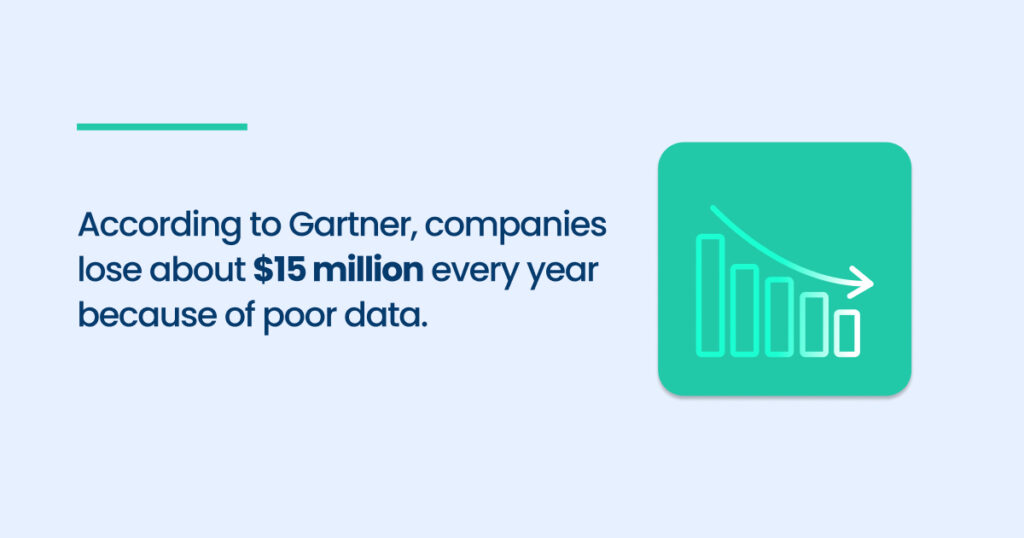
(source)
- Google Analytics: A fundamental tool for any digital business, Google Analytics tracks website traffic, user behavior, and conversion rates. It’s essential to understand how visitors interact with your site and identify areas for improvement.
- HubSpot: Offers powerful analytics on customer interactions and campaign performance. It’s valuable for businesses looking to streamline their inbound marketing efforts and nurture leads more effectively.
- Tableau: Turns complex data into easy-to-understand visuals. This can help you spot trends and make data-driven decisions quickly.
- Segment: Collects and centralizes data from various sources. This makes it easier to analyze your customer’s journey across different platforms.
- Semrush: An all-in-one tool for SEO, content marketing, competitor research, PPC, and social media marketing. Semrush provides you with insights into their online visibility, keyword performance, and SEO opportunities, making attracting and retaining organic traffic easier.
Evaluating the Impact: Measuring Success in Data-Driven Marketing
Let’s say you implemented a data-driven strategy in your marketing.
How do you know if it’s working?
You need to measure success. Let’s find out how to do it effectively.
Techniques for Measuring Strategy Effectiveness
- A/B Testing: Compare two campaign versions to see which performs better. You can assess performance based on metrics such as conversion rate, click-through rate, engagement, or any other relevant key performance indicators (KPIs) that align with your campaign goals.
- Conversion Rate Analysis: Look at the percentage of visitors who take a desired action. This shows how well your marketing drives people to action.
- Customer Lifetime Value (CLV): Calculating the total value a customer brings over their relationship with your business helps you understand the long-term impact of your data-driven marketing strategies. To calculate CLV, you typically focus on the average purchase value, purchase frequency, and customer retention rate.
Measuring ROI in Data-Driven Strategies
Another crucial aspect while measuring your strategy success is understanding ROI on marketing spend.
You need to know if using data is paying off.
It shows if the time and money you spend on data are worth it.
Here’s how to do that:
- Balancing Costs and Revenue: The first step is to compare each campaign’s direct revenue against its costs. This comparison is vital for identifying which strategies are financially sound and which may require reevaluation.
- Acknowledging the Intangibles: Beyond the immediate financial outcomes, you should also account for the intangible benefits of your data-driven marketing, such as improved brand recognition and customer engagement. Though not directly quantifiable in dollars, these elements are instrumental in building a solid market presence.
- Leveraging Predictive Insights: Using predictive analytics to forecast future ROI based on current data trends is a game-changer. It allows you to make more informed planning and allocate your budget right.
Future of Data-Driven Marketing: What’s Next?
As data-driven marketing evolves, technology and changing consumer needs shape its future.
Yet, with great power comes great responsibility.
Regulations like GDPR and the California Consumer Privacy Act are tightening marketing teams’ use of third-party data.
Let’s see what’s next for this dynamic field.
- Increased Use of First-Party Data: With stricter regulations, there’s a growing emphasis on leveraging first-party data. Data-driven marketers expect to invest more in technologies and strategies that enhance data collection from their channels.
- Privacy-First Strategies: The emphasis on consumer privacy reshapes how we collect data. Marketers are moving towards first-party data and privacy-compliant ways to gather insights. This shift ensures consumer trust and compliance with legal standards.
- Predictive Analytics and AI: These technologies allow us to anticipate consumer needs and personalize each marketing strategy at scale while respecting privacy boundaries.
- Improved Customer Experiences: With a focus on first-party data analysis, brands are poised to create more meaningful and personalized customer experiences. This direct relationship between brands and consumers fosters loyalty and engagement.
Even with new challenges, the goal stays the same: connecting with customers meaningfully. For businesses, this means being creative, flexible, and transparent.
Download Your Free Guide
[A] Growth Agency – Your Ultimate Full-Funnel, Data-Driven Growth Agency
Data-driven marketing helps businesses reach the right customers, boost ROI, and understand what works best.
It saves time and money by focusing resources on effective data-driven marketing strategy and revealing where customers are in the customer journey.
Plus, it showcases the growth agency’s value your business works with.
New privacy rules make the data-driven approach a bit tricky, but Azarian Growth Agency has all the tools to help your business grow.
Let’s turn data into your success story.
